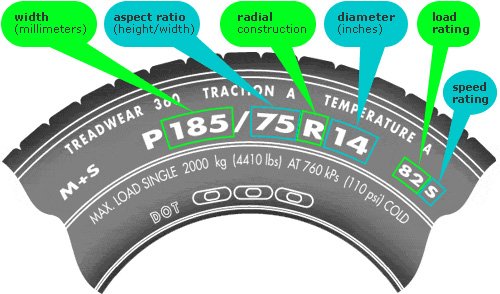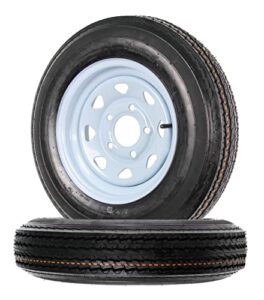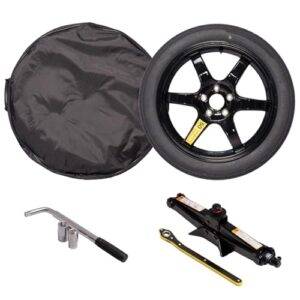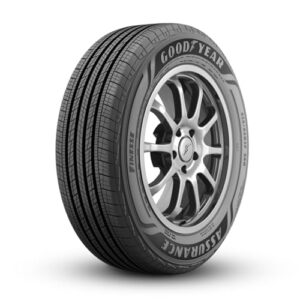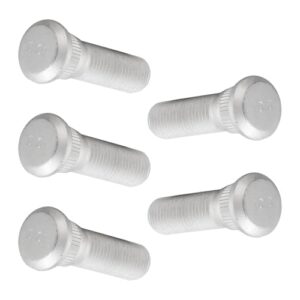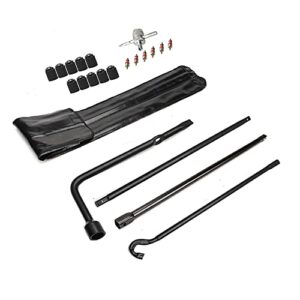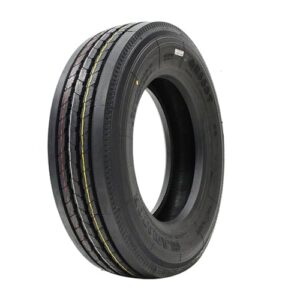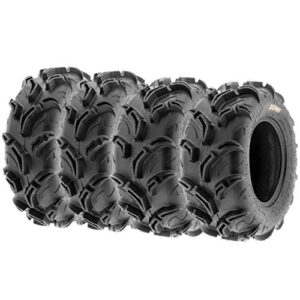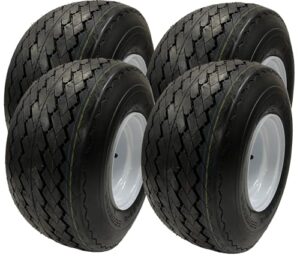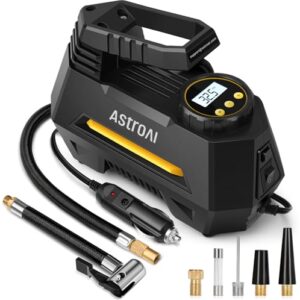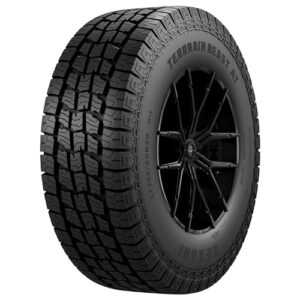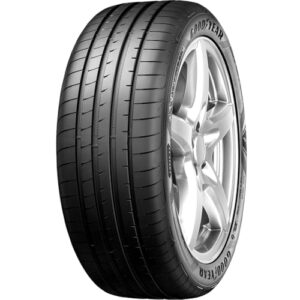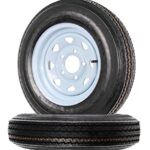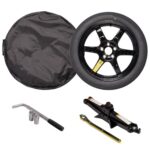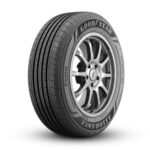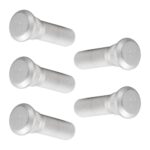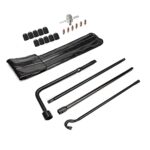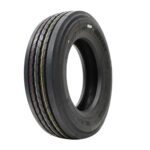Select tire size by checking your vehicle’s manual or the tire’s sidewall markings. Choose based on driving needs and terrain.
Choosing the right tire size is crucial for safety and performance. Tires affect your vehicle’s handling, fuel efficiency, and overall driving experience. Always refer to your vehicle’s manual for the recommended tire size. The markings on the tire’s sidewall also provide essential information.
Consider the type of driving you do most often, such as city driving or off-road adventures. The correct tire size ensures optimal contact with the road, enhancing both traction and control. Replacing tires with the wrong size can lead to uneven wear and potential mechanical issues. Make informed decisions to maintain your vehicle’s performance and safety.
Importance Of Tire Size
The importance of tire size cannot be overstated. Tire size affects many aspects of your vehicle. From safety to performance, getting the right size is crucial. Let’s dive into why tire size matters so much.
Safety Implications
Using the correct tire size is vital for safety. Properly sized tires ensure better grip on the road. This reduces the risk of skidding and accidents. Incorrect tire size can lead to blowouts. This puts you and others at risk. Always follow the manufacturer’s recommendations for tire size. It’s the safest choice.
Performance Impact
Tire size also impacts your vehicle’s performance. Larger tires can improve traction but may reduce fuel efficiency. Smaller tires might save fuel but can affect handling. The right balance is key for optimal performance. Here’s a quick comparison:
| Tire Size | Benefits | Drawbacks |
|---|---|---|
| Larger Tires |
|
|
| Smaller Tires |
|
|
Choosing the right tire size ensures a safe and smooth ride. It also helps maintain your car’s performance. Always consult your vehicle’s manual. It provides the recommended tire size for your car.

Understanding Tire Measurements
Selecting the right tire size is crucial for vehicle performance and safety. Understanding tire measurements ensures you make an informed decision. These measurements are usually found on the tire’s sidewall. Let’s break down the key components of tire measurements.
Width
The width of a tire is the measurement from sidewall to sidewall. It’s usually indicated in millimeters (mm). For example, a tire marked 225 has a width of 225 mm. This width affects the tire’s grip and handling. A wider tire provides more surface area contact with the road.
Aspect Ratio
The aspect ratio represents the height of the tire’s sidewall. It’s shown as a percentage of the tire’s width. For instance, if the aspect ratio is 60, the sidewall height is 60% of the tire’s width. A lower aspect ratio means a shorter sidewall, which improves handling but can reduce ride comfort.
Diameter
The diameter is the size of the wheel the tire fits. It’s measured in inches. For example, a tire marked R16 fits a wheel with a 16-inch diameter. The wheel diameter affects ride comfort and handling. Larger wheels can improve the vehicle’s appearance but may impact ride quality.
| Measurement | Unit | Example |
|---|---|---|
| Width | Millimeters (mm) | 225 mm |
| Aspect Ratio | Percentage (%) | 60% |
| Diameter | Inches | 16 inches |
Understanding these key measurements helps you choose the right tire size. It ensures optimal vehicle performance and safety.
How To Read Tire Sidewall
Reading the tire sidewall is crucial for selecting the right tire size. The sidewall contains important information. This information includes numbers and letters. These details help you understand your tire’s capabilities.
Decoding Numbers
The numbers on the tire sidewall tell a story. They indicate tire width, aspect ratio, and diameter. For example, a tire marked as 205/55R16 has specific measurements.
| Number | Meaning |
|---|---|
| 205 | Tire Width in millimeters |
| 55 | Aspect Ratio (height to width ratio) |
| R16 | Diameter in inches |
Load Index
The load index indicates how much weight the tire can support. This number is usually after the tire size. For example, in 205/55R16 91V, 91 is the load index.
- 91 can support up to 1,356 pounds.
- Check your vehicle’s manual for the correct load index.
Speed Rating
The speed rating shows the maximum speed the tire can handle. It is represented by a letter. For example, in 205/55R16 91V, V is the speed rating.
- V means the tire can handle speeds up to 149 mph.
- Ensure the speed rating matches your driving needs.
Understanding these codes helps you select the right tire. Always double-check your vehicle’s requirements. Happy driving!

Factors To Consider
Selecting the right tire size is crucial for safety and performance. Various factors influence this decision, including driving habits, climate conditions, and vehicle type. Let’s explore each factor in detail.
Driving Habits
Driving habits play a significant role in tire selection. Consider how and where you drive daily. For city driving, choose tires that offer comfort and efficiency. For off-road adventures, select tires with enhanced grip and durability.
- City Driving: Opt for smooth, quiet tires.
- Highway Driving: Look for fuel-efficient tires.
- Off-Road Driving: Select rugged, durable tires.
Climate Conditions
Climate conditions affect tire performance. Different tires suit different weather conditions. Choose tires designed for the specific climate of your region.
- Winter Tires: Best for snowy and icy roads.
- Summer Tires: Ideal for hot and dry conditions.
- All-Season Tires: Suitable for moderate climates.
Vehicle Type
Your vehicle type determines the appropriate tire size. Different vehicles require different tires for optimal performance.
| Vehicle Type | Recommended Tire Size |
|---|---|
| Compact Car | Small, fuel-efficient tires |
| SUV | Larger, more robust tires |
| Truck | Heavy-duty, durable tires |
Ensure the tire size matches your vehicle’s specifications. This ensures safety and performance.
Common Tire Size Mistakes
Picking the right tire size is crucial for your vehicle. Many people make common mistakes when choosing tire sizes. These mistakes can affect your car’s performance and safety. Let’s explore these common errors and how to avoid them.
Oversized Tires
Many think bigger tires look cool. Yet, oversized tires can cause problems. They can rub against the car body. This wears down the tires quickly. Oversized tires also affect fuel efficiency. Your car will use more fuel. Plus, oversized tires can affect the speedometer. Your speed readings may be wrong. Always check your car’s manual for the right size.
Undersized Tires
Choosing undersized tires can be dangerous. They might not handle the car’s weight well. Undersized tires can reduce traction. This makes driving in wet conditions risky. They can also affect braking distance. Your car may take longer to stop. Always ensure your tires match the car’s load rating.
| Tire Size | Common Issues |
|---|---|
| Oversized Tires |
|
| Undersized Tires |
|
Consulting Professionals
Choosing the right tire size can be tricky. Seeking advice from professionals can help. They ensure you get the best fit for your vehicle. Consulting professionals is a smart move. It saves time and avoids costly mistakes. Below are key professionals to consult.
Mechanics
Mechanics are tire experts. They understand vehicle needs and tire specifications. They can recommend the perfect tire size for your car. Mechanics use advanced tools to measure your tire size. They can spot issues that you may miss.
When visiting a mechanic, ask these questions:
- What size tire fits my car?
- Do I need special tires for weather conditions?
- Can you check my current tires for wear?
Mechanics can also help with tire rotation and alignment. This ensures your new tires last longer. Trusting a mechanic can give you peace of mind.
Retailers
Retailers offer a wide range of tire options. They have detailed knowledge of tire brands and sizes. Retailers often provide tire fitting services. They can help you choose the best tire size for your vehicle.
Here are tips for consulting a retailer:
- Check their reviews online.
- Ask about their tire warranty options.
- Inquire about any ongoing promotions or discounts.
Many retailers have online tools to find the right tire size. These tools can be a quick way to get started. Visiting a retailer in person can also be beneficial. You can see the tires and ask questions directly.
Working with retailers ensures you get the best deal and the right tire size.
Tools And Resources
Selecting the right tire size is crucial for vehicle performance and safety. Having the right tools and resources can make this task much easier. Below, we explore some essential tools and resources that can guide you in selecting the perfect tire size.
Online Calculators
Online calculators are handy tools for selecting tire sizes. These calculators allow you to input your current tire size and see compatible alternatives. They show dimensions such as diameter, width, and sidewall height.
Here are some popular online calculators:
- Tire Size Comparison Tool: Compares your current tire size with new options.
- Tire Size Converter: Converts metric tire sizes to inches and vice versa.
- Speedometer Calibration Tool: Adjusts your speedometer reading for new tire sizes.
Using these tools ensures you get a tire size that fits your vehicle perfectly.
Manufacturer Guidelines
Always check the manufacturer guidelines for tire size recommendations. The vehicle’s manual usually has a section dedicated to tire specifications. These guidelines ensure that you select tires that meet safety standards.
Key details to look for include:
- Recommended tire sizes
- Load ratings
- Speed ratings
Here’s an example of a table with tire specifications:
| Tire Size | Load Rating | Speed Rating |
|---|---|---|
| 225/50R17 | 98 | V |
| 205/55R16 | 91 | H |
Following manufacturer guidelines ensures your vehicle remains safe and efficient.
Diy Tire Size Selection
Choosing the right tire size is crucial for your vehicle’s performance and safety. Doing it yourself can save time and money. This guide will help you understand how to select the correct tire size. Let’s dive into the DIY Tire Size Selection process.
Measuring Tools
Before starting, gather these tools:
- Measuring Tape: Measure tire diameter and width.
- Tire Pressure Gauge: Check tire inflation.
- Caliper: Measure tire tread depth.
- Notebook: Record measurements.
Step-by-step Guide
- Find the Tire Size Code: Look at the sidewall for a code like P215/65R15.
- Measure Tire Diameter: Use a measuring tape to measure from top to bottom.
- Measure Tire Width: Measure from one side to the other across the tread.
- Check Tread Depth: Use a caliper to measure the tread depth.
- Record Data: Write down all measurements in your notebook.
- Compare with Manufacturer Specs: Verify your measurements match the recommended tire size for your vehicle.
Here is a table to help you understand the tire size code:
| Code Section | Description |
|---|---|
| P | Type of tire (Passenger) |
| 215 | Width in millimeters |
| 65 | Aspect ratio (height to width) |
| R | Radial construction |
| 15 | Diameter in inches |
By following this guide, you can confidently select the right tire size. Accurate measurements ensure optimal performance and safety for your vehicle.
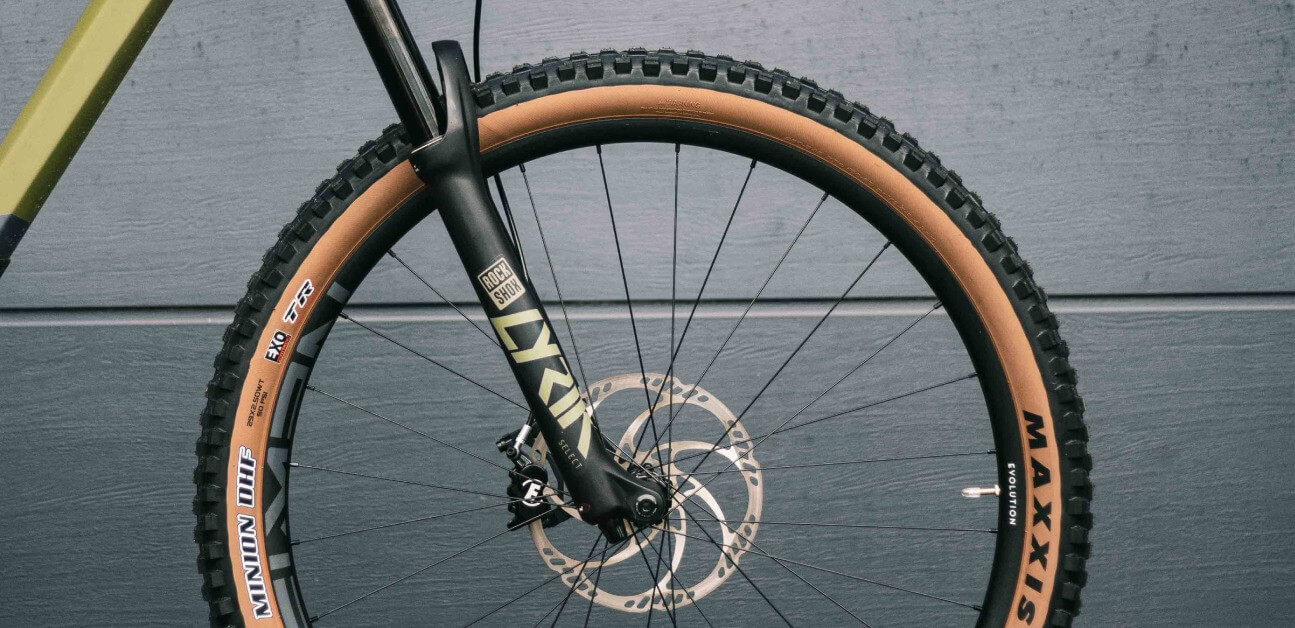
Frequently Asked Questions
How Do I Figure Out What Size Tires I Need?
Check the tire sidewall for size markings. Refer to your vehicle’s owner’s manual or consult a tire professional.
Can I Use 275 Tires Instead Of 265?
Yes, you can use 275 tires instead of 265. Ensure the wider tire fits your vehicle’s rims and wheel wells. Always consult your vehicle’s manual or a tire expert before making changes.
What Is The Rule For Tire Size?
Tire size rules involve matching the tire width, aspect ratio, and diameter to the vehicle’s specifications. Always consult the vehicle manual.
How To Choose The Correct Tyre Size?
Check your vehicle’s manual for recommended tyre size. Match width, aspect ratio, and diameter. Ensure load and speed ratings fit. Consult a professional if unsure.
Conclusion
Selecting the right tire size ensures safety and performance. Always check your vehicle’s manual for recommendations. Consult with professionals if you’re unsure. Proper tire size enhances fuel efficiency and driving comfort. Make an informed choice to enjoy a smooth and safe driving experience.


